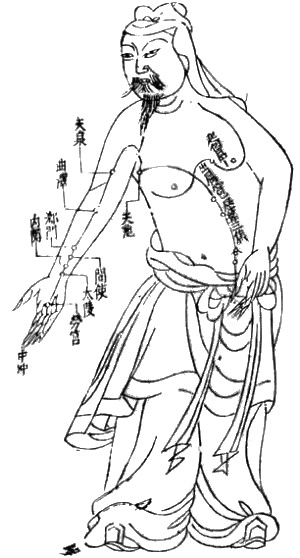December 22nd, 2012 § Comments Off on Declining Sperm in France? § permalink
By Jim Hotaling, M.D.
Gawker recently reported on an article in the scientific journal Human Reproduction that found sperm numbers and shape to worsen in France during a 16 year period. Studies that claim sperm are declining worldwide have been published for at least the last 20 years. If the trend is true, one guess for its cause was suggested by the Danish scientist Niels Skakkebaek, who argues that chemicals in materials such as plastics act as synthetic hormones that interrupt a man’s own internal natural hormones.
The Human Reproduction article is well designed, studying a very large group of 26,609 men from infertility clinics in France from 1989 to 2005. Each man had two semen analyses, which adds to the strength of the paper as sperm counts change much even from day to day. The scientists concluded that sperm count decreased 1.9% per year in France during the time period of the study.
Before jumping to the conclusion that the fertility of French men is dipping, there are some important limitations of the study. To their credit, the scientists state most of them clearly in their paper. The first is that the scientists studied men showing up in fertility clinics. These men as a group are probably different that the average guy in France. Second, the men got older during the study. While the age increase was small, 34.2 to 35.9 years, and may not mean much, the deCODE study suggests that changes in sperm may start early in a man’s life. Third, giving a sample in an fertility lab may not be the same as when it’s delivered naturally.
This study probably isn’t great cause for concern that sperm are on a steep decline in France. Even if the numbers are going down a bit, there’s still plenty of sperm in these men to do the job.
July 20th, 2011 § Comments Off on Needles and Sperm § permalink

A reader recently asked whether acupuncture helps sperm.
I have to admit I’m a Western thinker, but that doesn’t mean that I automatically dismiss anything Eastern. It does mean that, as is true of any treatment, I will want to see evidence of effectiveness before I believe that it works. The most compelling proof will include:
- A comparison of those patients who are treated and those who are not,
- Patients (and preferably doctors) who don’t know which patients are being treated and which are not,
- Statistics that demonstrate the chances that the conclusion is wrong,
- More than one study that says it is right.
A number of published studies report how sperm fares with acupuncture. One, published in Fertility and Sterility in 2009, described the use of a special device that either performed acupuncture or just looked like it did, so that patients did not know whether or not they were being treated. Comparing men who were actually treated to those who weren’t, the authors could say with around 95% confidence that motility after acupuncture increased about 10%. The authors didn’t observe an increase in sperm count, and semen volume decreased a little.
If effective, acupuncture would be a great treatment for men who need to improve motility. But first, I’d like to see a study similar to the one done in 2009, but from different investigators and showing similar results. Until then, I’d say acupuncture looks promising but needs a bit more study.
June 16th, 2010 § § permalink
The testes must be kept cool for the proper production of sperm. One way the human body achieves this is to house them outside the body. Another is to have a network of veins surrounding the artery pumping blood into the testis: the veins take the heat away in a “counter-current” heat exchange similar to a radiator. (The human body is an amazing piece of engineering.)
Arteries don’t need to worry about moving blood; there’s a huge amount of pressure coming from the heart to help with that. But once the blood goes through the capillaries and into the veins, getting back to the heart isn’t easy. Veins have little valves to help hold the blood while it pulses its way back. If those little valves start to separate, the vein expands, causing the condition known as a “varicose vein.” Varicose veins can happen in many places in the body, often visibly in the skin of the legs, but, believe it or not, also in the scrotum. And if varicose veins develop in the scrotum, they can disturb the counter-current heat exchange. The testes then get hot, posing a problem for developing sperm cells.
Varicose veins in the scrotum are called a “varicocele,” and there are three kinds. A grade I varicocele can’t be felt or seen without equipment like ultrasound. Almost all experts now consider grade I varicoceles to be unimportant. Varicoceles that can be felt (grade II) or visible by the naked eye (grade III) are the ones that may cause problems with sperm production. Some men have such high sperm production that their varicoceles don’t significantly alter their chance of making women pregnant. But many men’s testes are affected by grade II or III varicoceles.
Inside of a man, the left vein draining the testis back towards the heart is longer than the right. As a result, varicoceles are most often found in the left scrotum. Sometimes, they’re on both sides, and infrequently, they’re on the right side alone. A right sided varicocele that suddenly appears in adult life is worrisome, as it may be a sign of kidney cancer.
What can be done about a varicocele that may be throwing a wrench into the sperm factory? A urologist can tie or clip the veins in a procedure called “varicocelectomy,” or an interventional radiologist can inject material into the veins to block the flow of blood.

